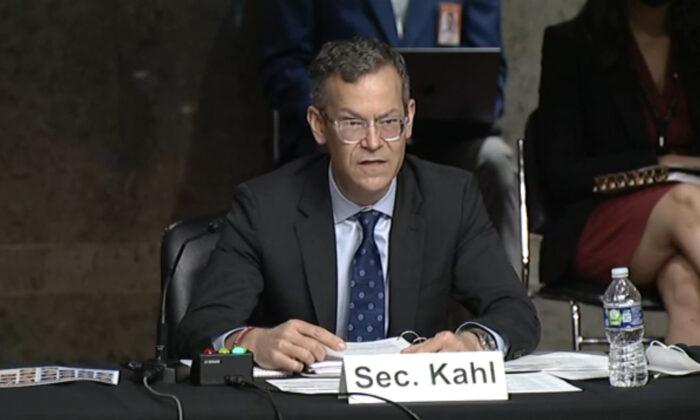ISIS-K, the branch of the ISIS terrorist group that’s active in Afghanistan, could be capable of launching international attacks in as soon as six to 12 months, according to a top Pentagon official.
Kahl said the goal was to “be vigilant in disrupting” ISIS and al-Qaeda, so they can’t develop the capability to attack the United States.
Lt. Gen. James J. Mingus, the Joint Staff’s director for operations, said the timeline is “based on no U.S. or coalition intervention.”“The goal would be to keep those time horizons where they’re at now, if not, even further,” Mingus told the committee.

The Taliban terrorist organization took full control of Afghanistan on Aug. 15, after the U.S.-backed Afghan government fled the country.
“It is our assessment that the Taliban and ISIS-K are mortal enemies,” Kahl told lawmakers. “So the Taliban is highly motivated to go after ISIS-K.”
“Their [The Taliban’s] ability to do so, I think, is to be determined,” he said.
He estimated that ISIS has a “cadre of a few thousand” fighters. Acting Foreign Minister Amir Khan Muttaqi of the new Taliban government said the threat from ISIS terrorists will be addressed and that Afghanistan wouldn’t become a base for attacks on other countries.
“We have seen signs ... that the Taliban is wary about Afghanistan being a springboard for al-Qaeda external attacks, not because the Taliban are good guys, but because they fear international retribution if that were to occur,” Kahl said.
Kahl suggested that an al-Qaeda presence in Afghanistan poses a complex problem, given its ties to the Taliban. It was those ties to the Taliban that triggered the U.S. military intervention in Afghanistan in 2001, following al-Qaeda’s Sept. 11 attacks on New York and Washington. The Taliban had harbored al-Qaeda leaders.
The United States has fought the Taliban and has conducted strikes on ISIS and al-Qaeda.




